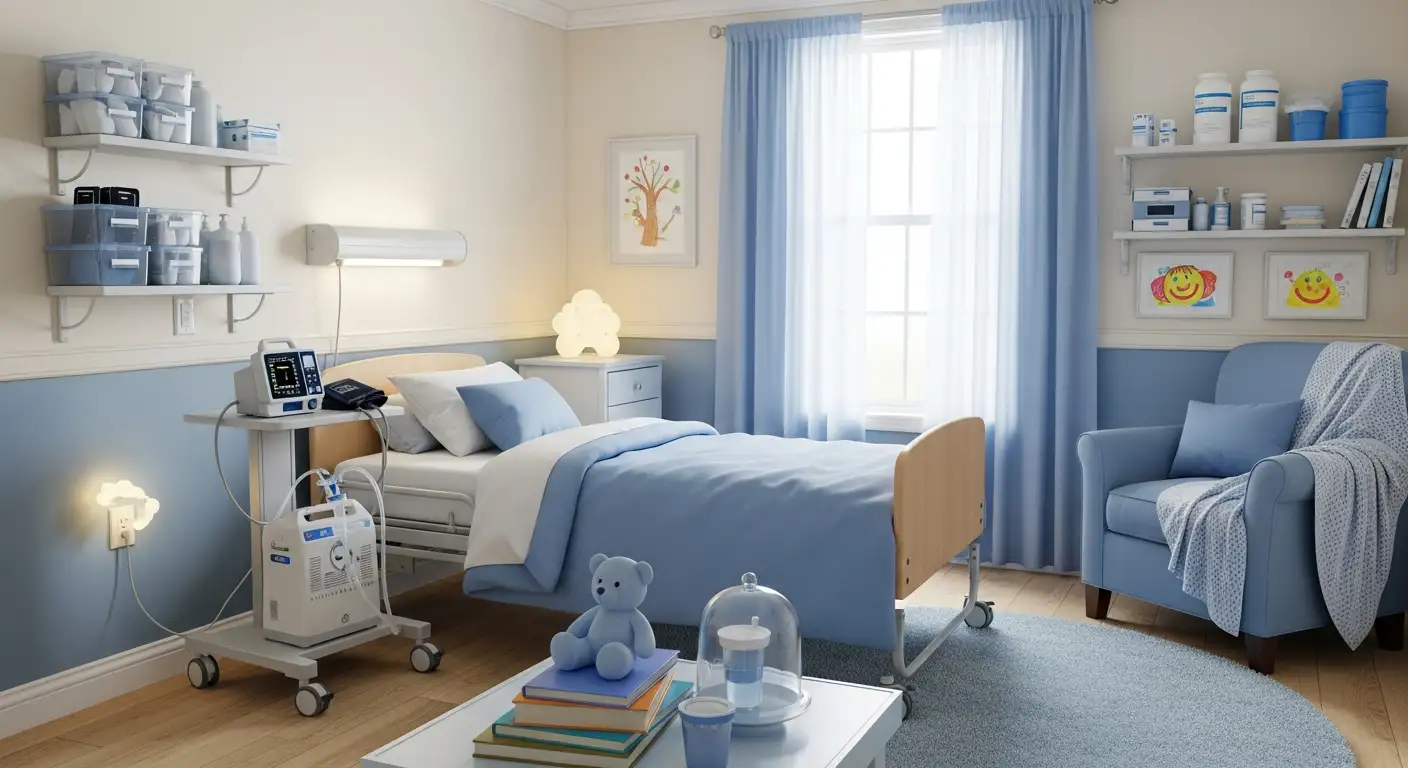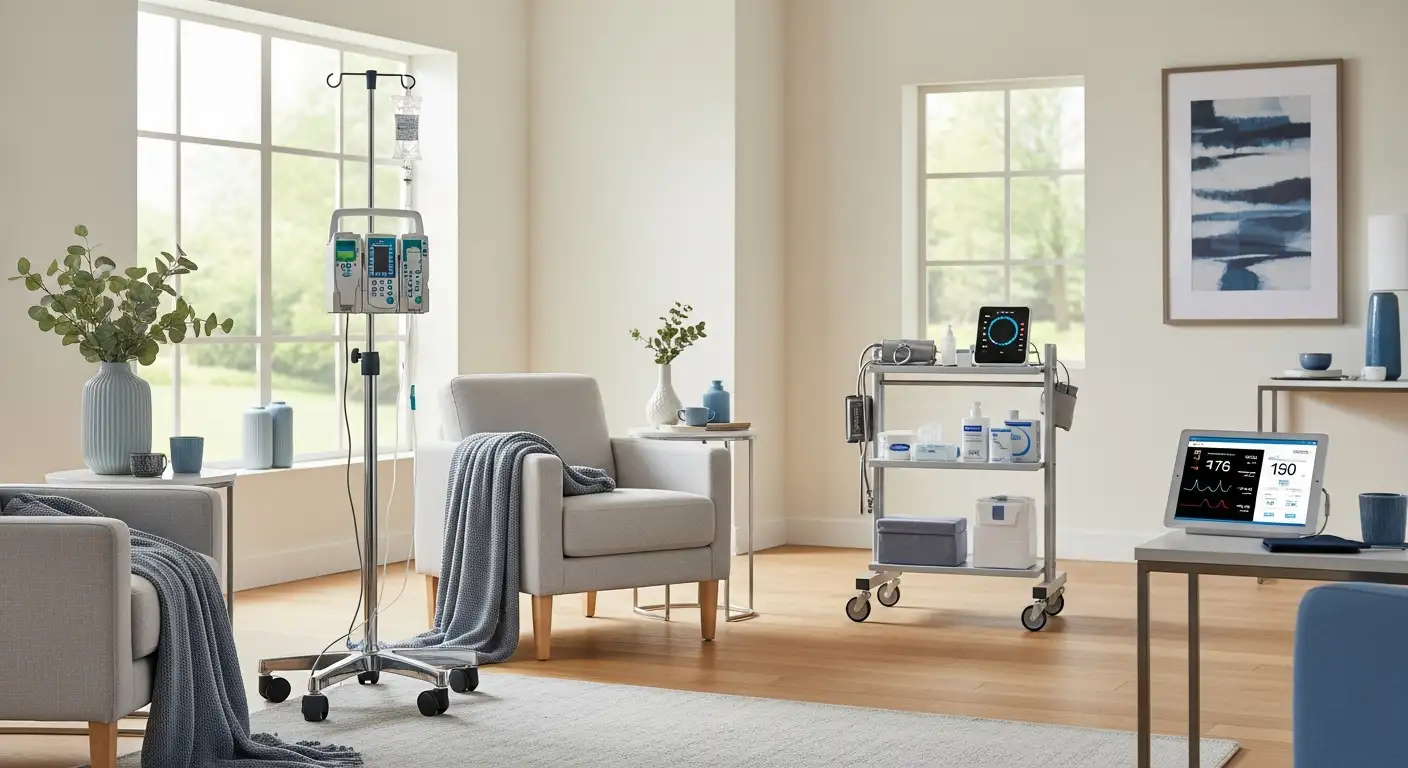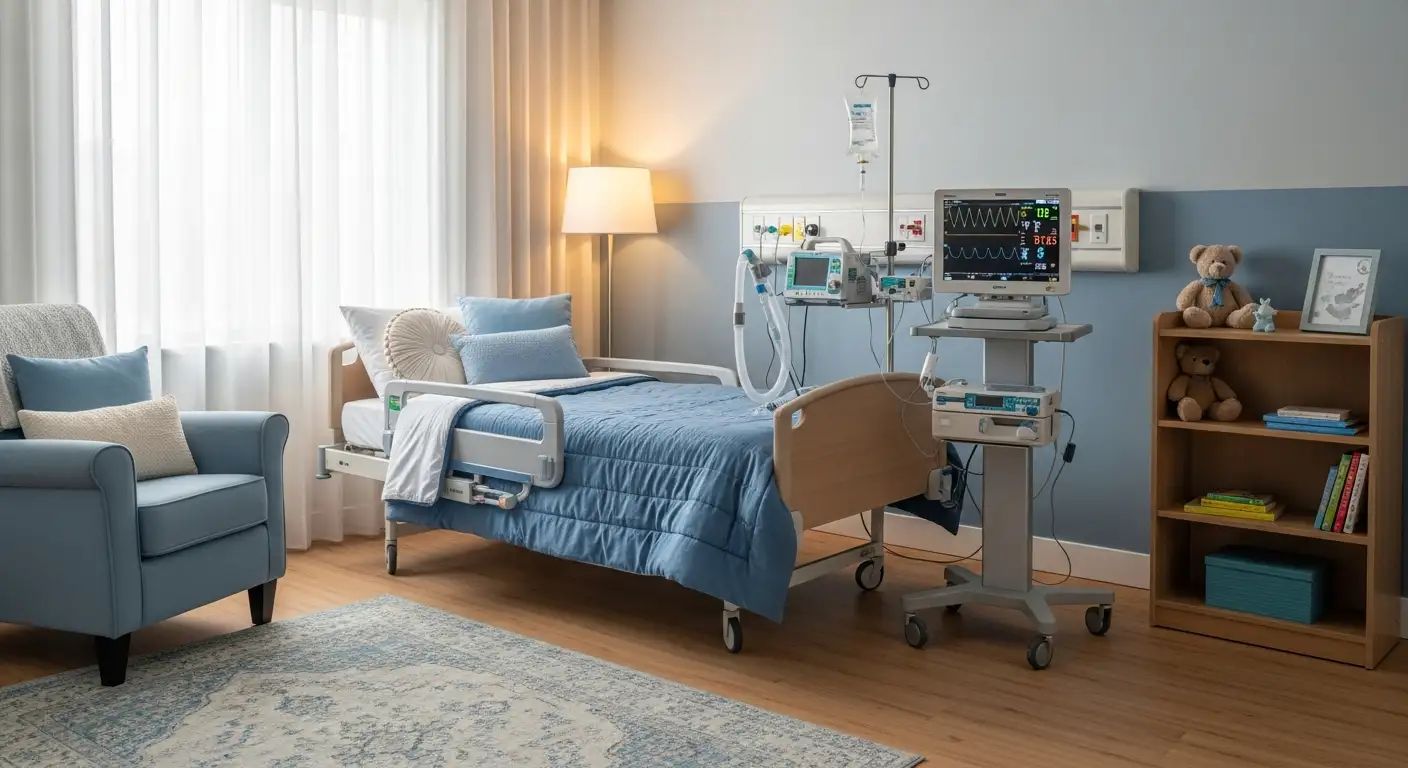Understanding the Power of Homemaking Care in Stroke Rehabilitation
Recovery after a stroke is a complex journey that involves not only medical treatment but also a supportive home environment conducive to regaining independence. Homemaking care, tailored to each survivor's unique needs, plays a pivotal role in fostering confidence, promoting functional recovery, and enabling individuals to live autonomously in their familiar surroundings. This article explores the strategies, practices, and family-centered approaches that make homemaking care an effective catalyst for independence after stroke.
The Role of Home-Based Care and Support Strategies in Stroke Recovery
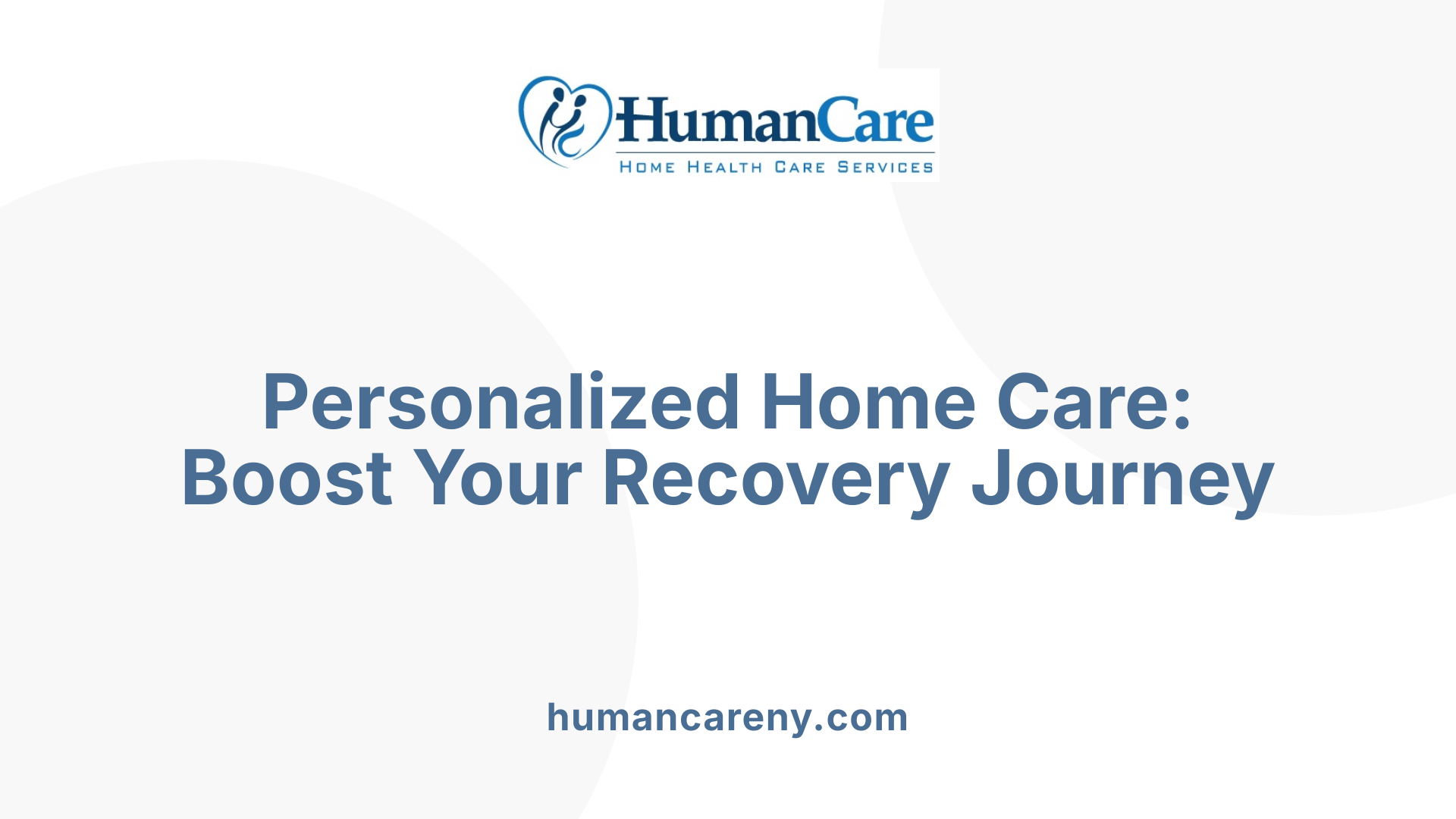
What is the role of home-based care and support strategies in stroke recovery?
Home-based care is instrumental in helping stroke survivors regain independence and improve their quality of life. These strategies involve continuous, personalized support that caters to the diverse physical, cognitive, emotional, and functional challenges faced during recovery.
A successful transition from hospital to home requires coordinated efforts from multidisciplinary teams, including nurses, physical therapists, occupational therapists, speech therapists, and home caregivers. They work together to develop tailored care plans that focus on rehabilitation exercises, medication adherence, safety modifications, and emotional well-being.
Support systems emphasize ongoing assessment of a patient's progress, adjusting interventions as needed. Practical techniques like adaptive equipment, environmental safety evaluations, and compensatory strategies—such as dressing the affected side first—help promote independence in daily activities.
Emotional encouragement and social support from caregivers boost confidence and help combat feelings of frustration or isolation. Caregivers also provide reminders for medication, facilitate participation in therapy routines, and assist with mobility to reduce fall risks.
Community interventions, including caregiver training programs, play a significant role in empowering families. These programs educate caregivers on safe care practices, recognizing signs of stroke recurrence, and supporting ongoing rehabilitation efforts.
By fostering a comprehensive, patient-centered approach, home-based care helps stroke survivors effectively manage their condition, avoid complications, and reconnect with their community, all while maintaining dignity and autonomy.
How do personalized, holistic support systems enhance recovery?
Personalized care considers the specific needs, goals, and disabilities of each survivor. It integrates physical therapy, medication management, home safety modifications, and psychological support tailored to individual recovery paces.
Holistic support also involves emotional and social components—addressing mood, motivation, and mental health—crucial for sustained engagement in rehabilitation.
Using tools like telehealth and digital monitoring helps track progress, enabling swift adjustments in care plans. These technologies foster ongoing communication between patients and healthcare teams, ensuring a responsive and adaptive support system.
What are the benefits of community interventions and caregiver training?
Community programs and caregiver education improve the effectiveness of home care. Trained caregivers can better support rehabilitation exercises, recognize warning signs, and ensure safety at home.
Such interventions reduce caregiver stress, prevent burnout, and promote a more sustainable care environment. They also strengthen the partnership between families and healthcare providers, leading to well-informed decision-making.
Overall, these strategies create a supportive ecosystem that promotes long-term recovery, prevents hospital readmissions, and helps stroke survivors thrive within their communities.
| Aspect | Focus | Impact |
|---|---|---|
| Multidisciplinary Rehabilitation | Physical, cognitive, speech therapies | Enhanced functional recovery |
| Medication & Safety | Monitoring, environmental modifications | Reduced complications & fall risk |
| Emotional & Social Support | Counseling, companionship | Improved mental health |
| Community & Caregiver Training | Education, skill-building | Increased independence & confidence |
Family-Centered Approaches to Supporting Independence After Stroke

What are family-centered approaches support independence after a stroke?
Family-centered strategies play a vital role in helping stroke survivors regain independence by actively involving family members in every step of the recovery process. These approaches emphasize collaboration between healthcare providers, patients, and their families, fostering a partnership that promotes confidence, autonomy, and emotional well-being.
Involving families in care planning ensures that interventions are tailored to the unique needs of both the survivor and their caregivers. This includes education about stroke management, training in caregiving techniques, and continuous support, which together enhance the family's ability to provide effective assistance.
Assessing caregiver strengths and needs is essential. Healthcare professionals evaluate the caregiver's physical ability, emotional resilience, and available resources. This understanding allows for customized interventions such as skills training, use of adaptive equipment, and psychosocial support, strengthening the caregiver's capacity and reducing stress.
Home visits are a cornerstone of family-centered care, providing opportunities for practical skills training and safety evaluations. During these visits, caregivers learn how to assist with mobility, personal care, medication management, and therapeutic exercises.
Emotional support and social connection are also prioritized. Caregivers and survivors engage in counseling, peer support groups, and reassurance strategies to combat feelings of frustration and isolation, which are common in post-stroke recovery.
Fostering a sense of control and independence involves encouraging survivors to participate actively in routines, respecting their preferences, and setting realistic goals. Small, manageable tasks build confidence, and supportive guidance ensures they do not feel overwhelmed.
By respecting patient choices, involving families in shared decision-making, and providing ongoing education, family-centered care nurtures an environment where stroke survivors can regain independence at their own pace. Overall, these compassionate and collaborative approaches significantly improve long-term recovery outcomes and enhance quality of life.
Practical Tips for Caring for Stroke Patients at Home to Promote Independence
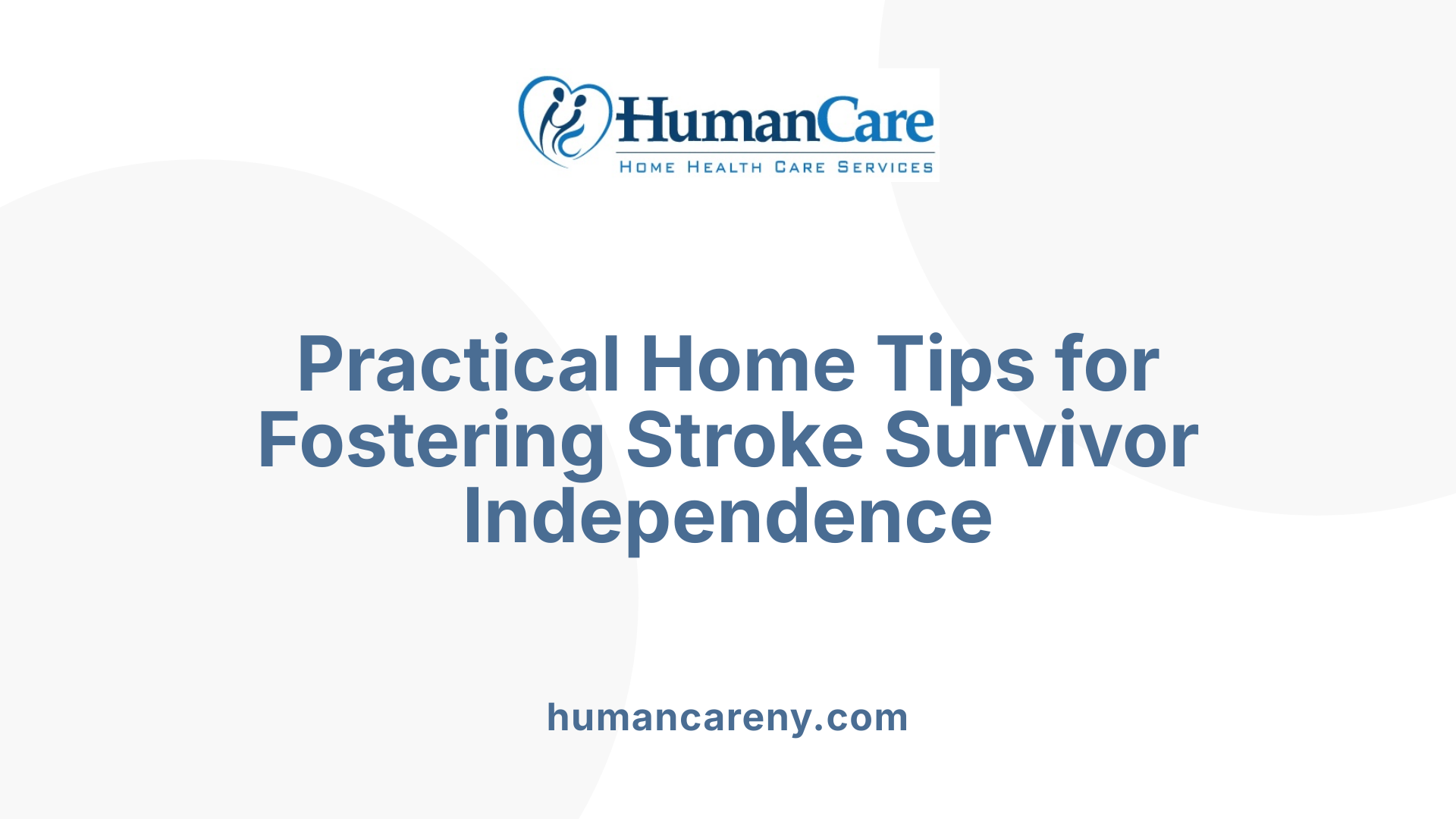
What are practical tips for caring for stroke patients at home to promote independence?
Supporting stroke survivors at home involves multiple strategies aimed at fostering independence and confidence. One of the foundational steps is creating a safe and accessible environment. This includes removing trip hazards like loose rugs and clutter, installing grab bars in bathrooms, and using adaptive equipment such as raised toilet seats or elastic shoelaces. Such modifications reduce fall risks and make daily activities safer.
Encouraging participation in daily routines is equally vital. Caregivers should motivate stroke survivors to do as much as possible, offering gentle encouragement and patience. Supporting rehabilitation exercises—whether guided by therapists or through routine activities—helps rebuild physical skills, strength, and coordination. Consistent practice not only enhances physical recovery but also boosts morale and independence.
Monitoring health and medication adherence is critical for safety. Regular check-ins with healthcare professionals, managing medications properly, and observing for any signs of complications or setbacks allow for timely interventions. Using digital tools or reminders can aid in medication management and symptom tracking.
In-home therapy exercises tailored to the individual’s disabilities can be integrated into daily life, promoting neuroplasticity and recovery. Emotional support and reconnecting with hobbies or routines help improve mental health and foster a positive outlook during recovery.
Engaging community resources, joining support groups, and maintaining open communication with family and caregivers create a supportive environment. Training caregivers on proper techniques and safety precautions ensures effective assistance while empowering the survivor.
By combining these practical tips—home modifications, encouraging activity, vigilant health monitoring, and emotional support—families can greatly improve the stroke survivor’s ability to live independently and enjoy a better quality of life.
Adopting a patient-centered, gradual approach promotes autonomy, helping survivors regain not just physical functions but also confidence and emotional well-being.
Additional Considerations
| Aspect | Practical Actions | Details & Resources |
|---|---|---|
| Home Safety | Remove hazards, install grab bars | Use community resources for home modifications |
| Daily Activities | Encourage participation, routine | Set realistic goals, use reminder notes |
| Rehabilitation | Support exercises, therapy plans | Consult with therapists for tailored routines |
| Health Monitoring | Regular check-ins, medication reminders | Digital apps, telehealth options |
| Emotional Well-being | Foster hobbies, emotional support | Support groups, family involvement |
Influence of Home Rehabilitation Practices on Stroke Recovery
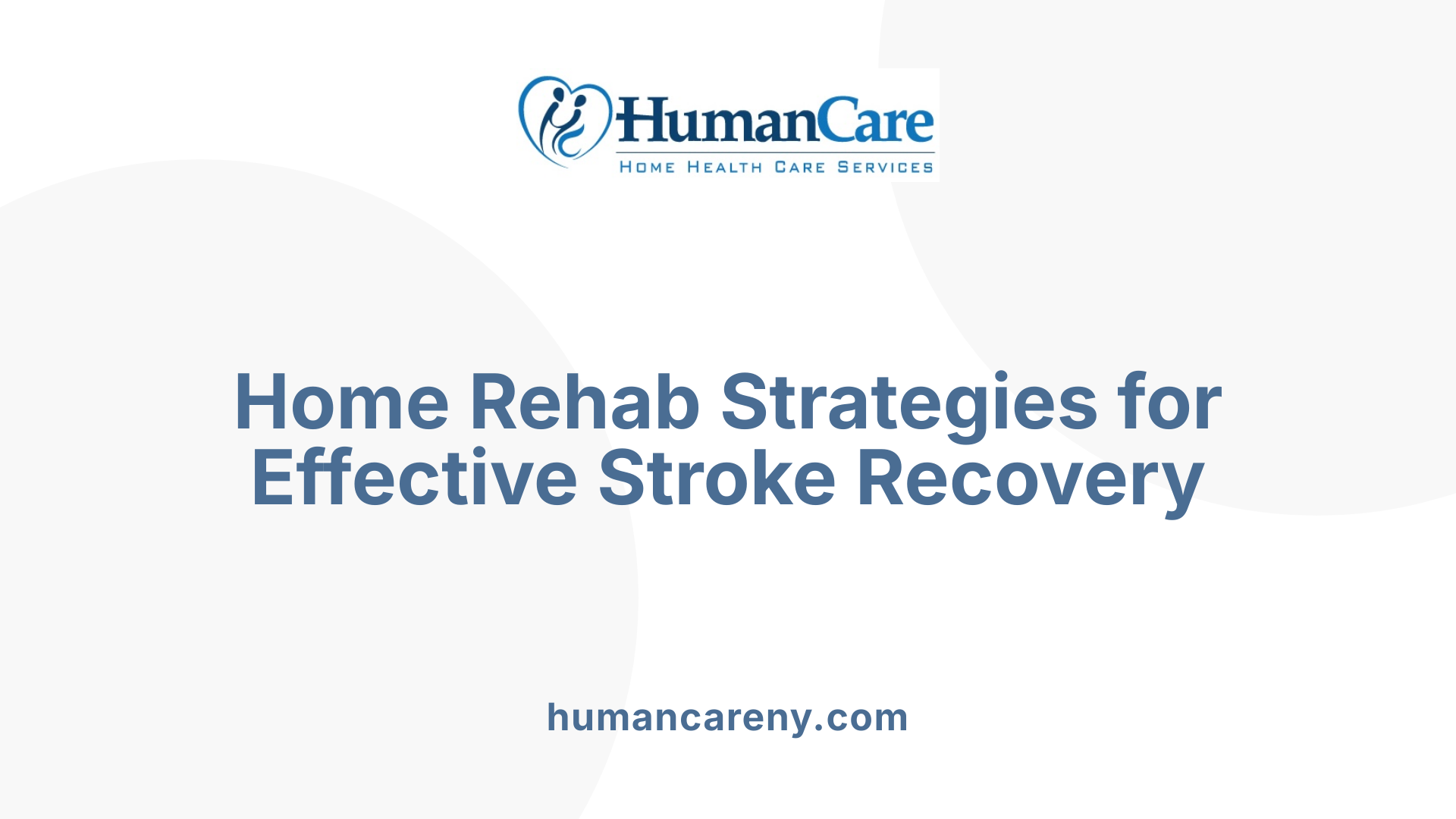
How do rehabilitation practices at home influence stroke recovery?
Rehabilitation within the home setting plays a vital role in stroke recovery by promoting independence and enhancing overall quality of life. Personalized routines that focus on physical and cognitive exercises can significantly improve motor skills and cognitive function, helping survivors regain essential abilities.
The incorporation of assistive devices and innovative technologies, such as electrical stimulation systems and adaptive equipment, supports the relearning process. These tools help improve mobility, especially in the upper limbs, and facilitate the transfer of skills into everyday activities.
Early supported discharge, which involves transitioning patients from hospital to home with continuous therapy, offers notable benefits. Research indicates that such programs can reduce dependency, decrease the length of hospital stays, and yield recovery outcomes comparable or better than those achieved through traditional inpatient rehabilitation.
Beyond physical gains, home-based rehab fosters psychological stability by allowing survivors to engage in familiar routines and social interactions. This environment encourages emotional well-being, gives a sense of control, and helps combat feelings of frustration or isolation.
Overall, integrating tailored physical, emotional, and social approaches at home leads to more effective and personalized stroke recovery, underscoring the importance of comprehensive home rehabilitation strategies.
How Homemaking and In-Home Care Promote Independence in Stroke Survivors
How can homemaking and in-home care promote independence in stroke survivors?
Homemaking and in-home care play vital roles in supporting stroke survivors' journey toward independence. By offering personalized assistance with daily activities such as dressing, bathing, meal preparation, and mobility, these services help patients regain functional skills that may have been affected by stroke. Tailored support encourages patients to participate actively in their recovery, fostering confidence and motivation.
Creating a safe environment is another essential aspect. Caregivers identify potential hazards like loose rugs or clutter and implement safety modifications, such as grab bars and adaptive equipment. This reduces the risk of falls and accidents, while regular assessments help track medical and behavioral issues, ensuring timely intervention.
Ongoing education and psychosocial support also contribute significantly. Caregivers provide instruction on managing medications, recognizing warning signs, and practicing rehabilitative exercises. Emotional encouragement combats feelings of frustration and isolation, boosting morale and mental health.
Furthermore, the use of multidisciplinary, patient-centered care plans—developed by teams including therapists, nurses, and physicians—ensures comprehensive support. Adaptive techniques, such as dressing the affected side first or utilizing reminder notes, help patients perform tasks independently.
Early supported discharge programs and home-based rehabilitation empower survivors to apply therapy exercises in familiar surroundings, promoting neuroplasticity and recovery. Overall, these combined efforts create an environment that supports independence, improves quality of life, and reduces reliance on institutional care.
Motivating Recovery Through Caregiver Support and Balance
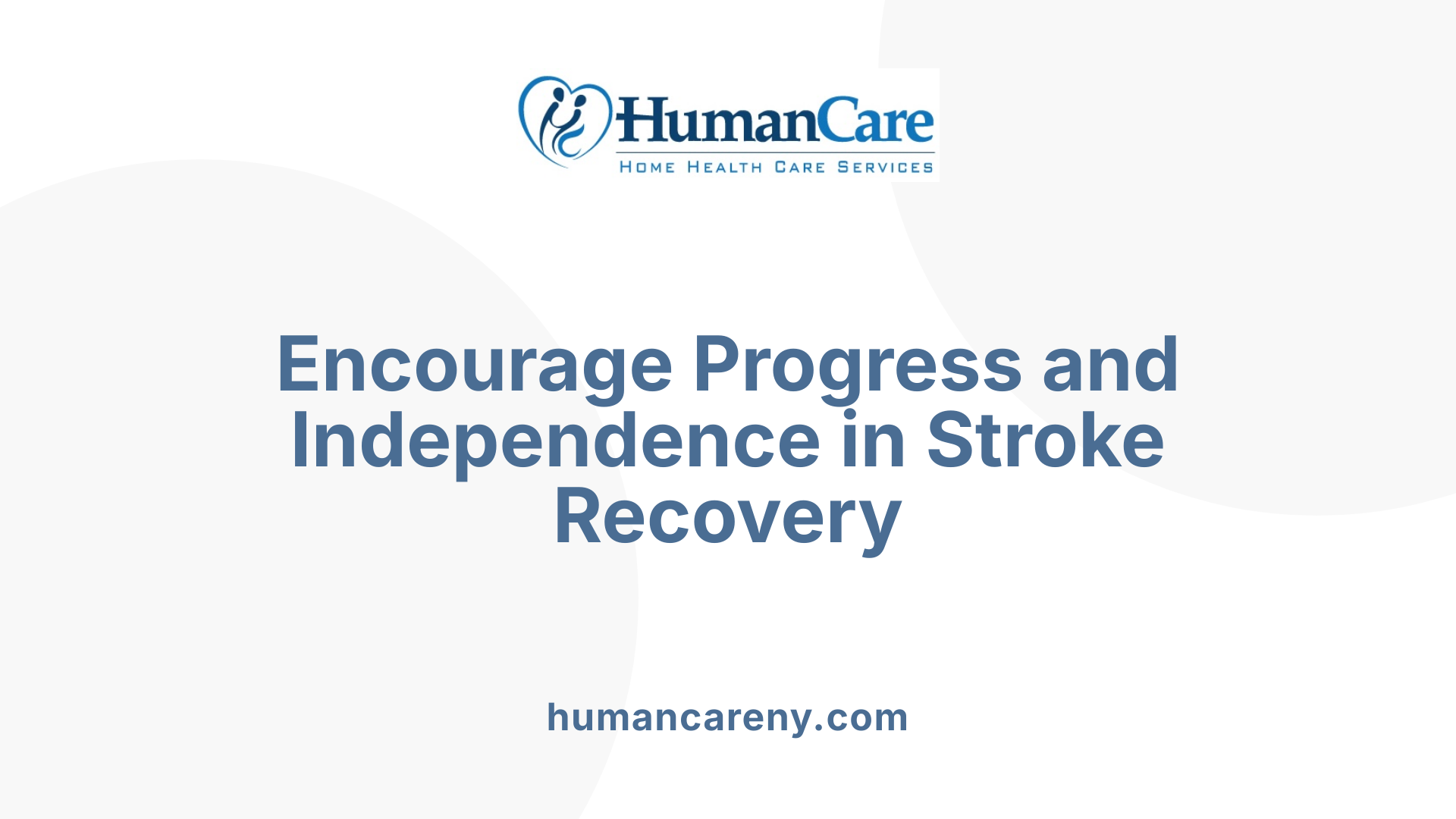
How can caregivers motivate stroke survivors during recovery?
Motivating stroke survivors is a vital part of the rehabilitation process. Caregivers play a crucial role by providing consistent encouragement and celebrating even small victories. Recognizing achievements, no matter how minor, can boost a survivor’s confidence and foster a positive outlook.
Engaging survivors in activities they enjoy helps create a sense of purpose, making recovery more meaningful. Emotional support is essential—listening to their concerns, addressing frustrations, and alleviating feelings of depression can make a significant difference.
Education about their progress helps survivors understand their capabilities and limitations, encouraging them to stay committed. Setting personalized, achievable goals together empowers survivors, giving them clear targets to work toward.
A structured routine and a safe environment also promote motivation. When survivors feel secure and supported, they are more likely to participate actively in their recovery. Combining encouragement with practical support encourages a mindset of progress and independence.
How can setting realistic goals and supporting independence help?
Establishing realistic goals helps prevent frustration and overwhelm. These goals should be tailored to each survivor’s current abilities and gradually increased as confidence and skills improve. Supporting independence by encouraging survivors to perform tasks themselves, with appropriate assistance, helps rebuild their confidence and sense of control.
Using practical techniques such as adaptive devices or step-by-step guidance makes daily activities more manageable. Promoting independence not only accelerates physical recovery but also enhances emotional well-being, fostering a sense of accomplishment.
How does gradual withdrawal of help promote confidence?
As survivors regain their skills, it’s important for caregivers to gradually reduce assistance. This careful tapering encourages survivors to take on more responsibilities, reinforcing their ability to function independently.
Continued encouragement during this phase reassures survivors that they can succeed. It also teaches them skills to adapt to challenges in daily life, creating a solid foundation for sustained independence.
Achieving the right balance—offering enough support to prevent setbacks without fostering dependency—is essential. This approach helps preserve dignity and motivates survivors to maintain their progress long-term.
In summary, motivating stroke survivors through balanced caregiver support involves consistent encouragement, realistic goal-setting, promoting independence, and a gradual reduction of assistance. These strategies work together to rebuild confidence and foster a resilient, autonomy-focused mindset during recovery.
Fostering Long-Term Independence and Well-Being
Supporting stroke survivors' journey toward independence requires a holistic, patient-centered approach rooted in homemaking care. By combining personalized support, family involvement, effective rehabilitation practices, and motivation techniques, caregivers and healthcare professionals can empower individuals to reclaim control over their daily lives. The integration of adaptive techniques, home modifications, and ongoing psychosocial support not only enhances functional recovery but also promotes dignity, emotional well-being, and long-term independence. Ultimately, nurturing a supportive home environment where every aspect of care is attuned to the survivor's needs creates the foundation for sustained autonomy and improved quality of life after stroke.
References
- How Home Care Supports Stroke Survivors in Regaining ...
- Maximizing Stroke Recovery at Home: A Home-Based Care Guide
- How Home Care Helps Seniors after a Stroke
- In-Home Care Supports Stroke Recovery - Right at Home
- How to Care for a Stroke Patient at Home with 15 Best Practices
- How Can In-Home Care Support Stroke Recovery? - Visiting Angels
- Finding a Balance for Effective Rehabilitation as a Caregiver
- Post-Stroke Care: How In-Home Care Can Aid Recovery
- Activities of daily living independence level for home discharge in ...

